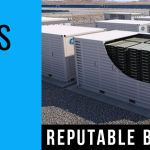In the Trump administration’s proposed Energy Department budget for next year, the funding for advanced battery research falls to about $36 million, from $140 million last year. The budget provides no funding for two showcase research programs _ a $20-million-a-year research hub at Argonne National Laboratory outside Chicago, and ARPA-E, an incubator for high-risk, high-reward battery and other energy projects. “Cutting research budgets for technologies of the future puts us at a competitive disadvantage with countries around the world who are investing in their scientists and entrepreneurs,” David Sandalow, a former undersecretary of energy, told Axios.
What’s behind this: Trump’s rationale is that the federal government is effectively subsidizing research that, if it’s justified, companies should pay for and carry out. But energy and technology experts — noting that the federal government funded the early development of today’s leading technologies, including cell phones, Siri, GPS and the Internet itself — say federal support is justified given the strategic economic nature of the industries, and the competition from rivals abroad.
A level deeper: Look for a fight in Congress. Claire Curry, a researcher at Bloomberg New Energy Finance, tells Axios that Asian companies are likely to continue dominating the manufacture of batteries. But government research has deep support in Congress, based on its merits and the hard politics that many of the government labs are spread across the country, and thus provide thousands of jobs. Oak Ridge National Lab, for example, is a core part of the Tennessee economy.

 Leading U.S. battery researchers say a
Leading U.S. battery researchers say a  India’s first grid-scale solar-plus-storage tender has been held up by the extreme drop in the country’s solar PV prices this year, according to Rahul Walawalkar, executive director of the Indian Energy Storage Alliance.
India’s first grid-scale solar-plus-storage tender has been held up by the extreme drop in the country’s solar PV prices this year, according to Rahul Walawalkar, executive director of the Indian Energy Storage Alliance. Spanish wind power developer Acciona has bagged an industry award for battery storage research, amid claims the company is playing catch-up to an emerging trend.
Spanish wind power developer Acciona has bagged an industry award for battery storage research, amid claims the company is playing catch-up to an emerging trend.  The United States had its largest ever quarter for energy storage deployment this year, deploying 234 megawatt-hours worth of energy storage across the first quarter of the year, representing a more than fiftyfold growth as compared to the same quarter a year earlier.
The United States had its largest ever quarter for energy storage deployment this year, deploying 234 megawatt-hours worth of energy storage across the first quarter of the year, representing a more than fiftyfold growth as compared to the same quarter a year earlier. Described in a recent report as the “undisputed king” of the energy storage industry, California continues to blaze new trails, now with legislation to boost customer-sited energy storage.
Described in a recent report as the “undisputed king” of the energy storage industry, California continues to blaze new trails, now with legislation to boost customer-sited energy storage. Tesla (NASDAQ:
Tesla (NASDAQ: Alternate energy has this one major flaw. It is very weather dependent. It depends so much on whether the sun is shining or the wind is blowing. If either reduces in intensity or stops so does its respective energy output.
Alternate energy has this one major flaw. It is very weather dependent. It depends so much on whether the sun is shining or the wind is blowing. If either reduces in intensity or stops so does its respective energy output. Powervault and Renault are placing 50 home storage units into UK households already fitted with solar arrays. The trials will incorporate second-life EV batteries provided by the carmaker to reduce the cost of the unit by 30%.
Powervault and Renault are placing 50 home storage units into UK households already fitted with solar arrays. The trials will incorporate second-life EV batteries provided by the carmaker to reduce the cost of the unit by 30%.



